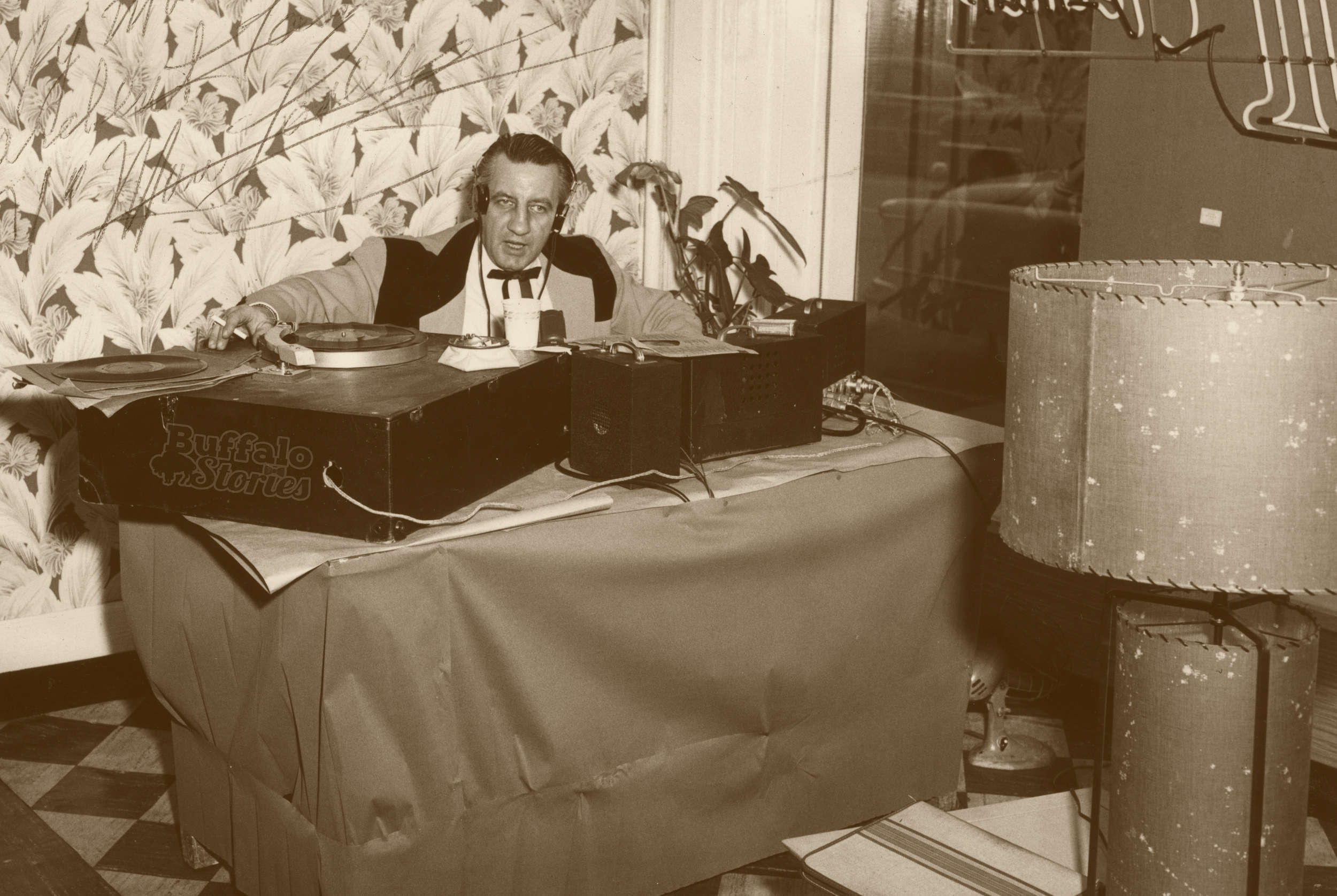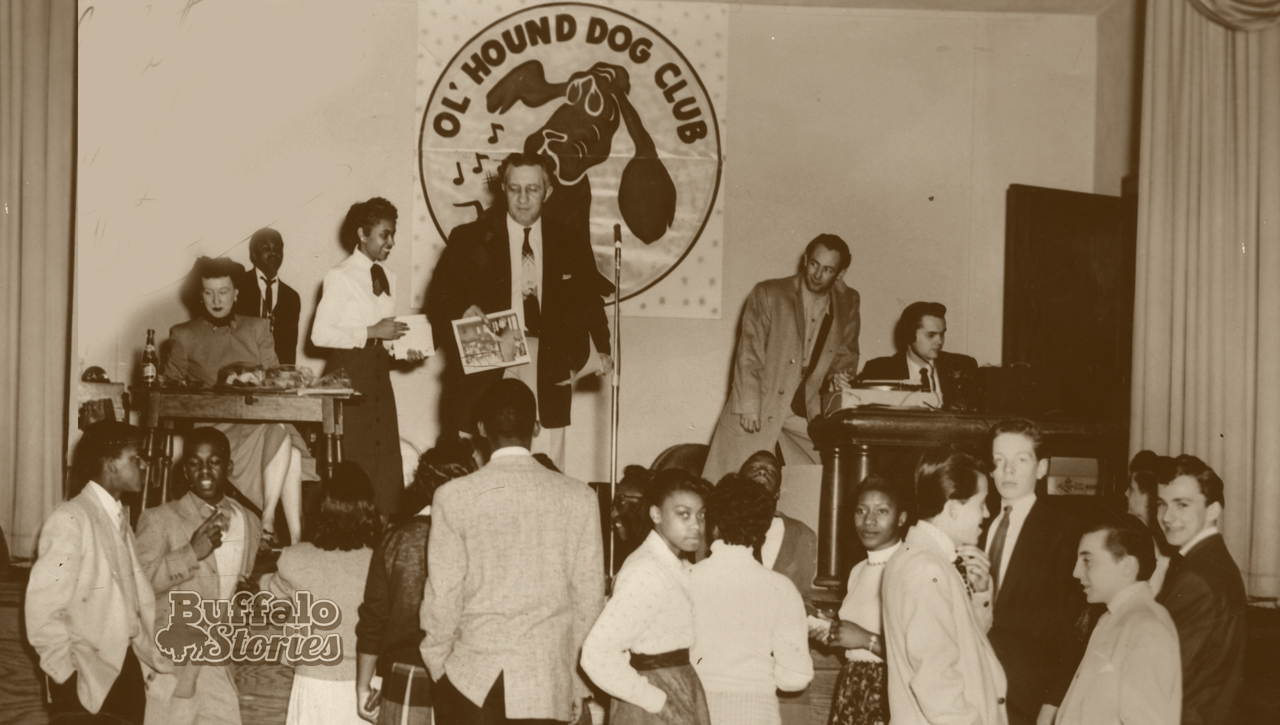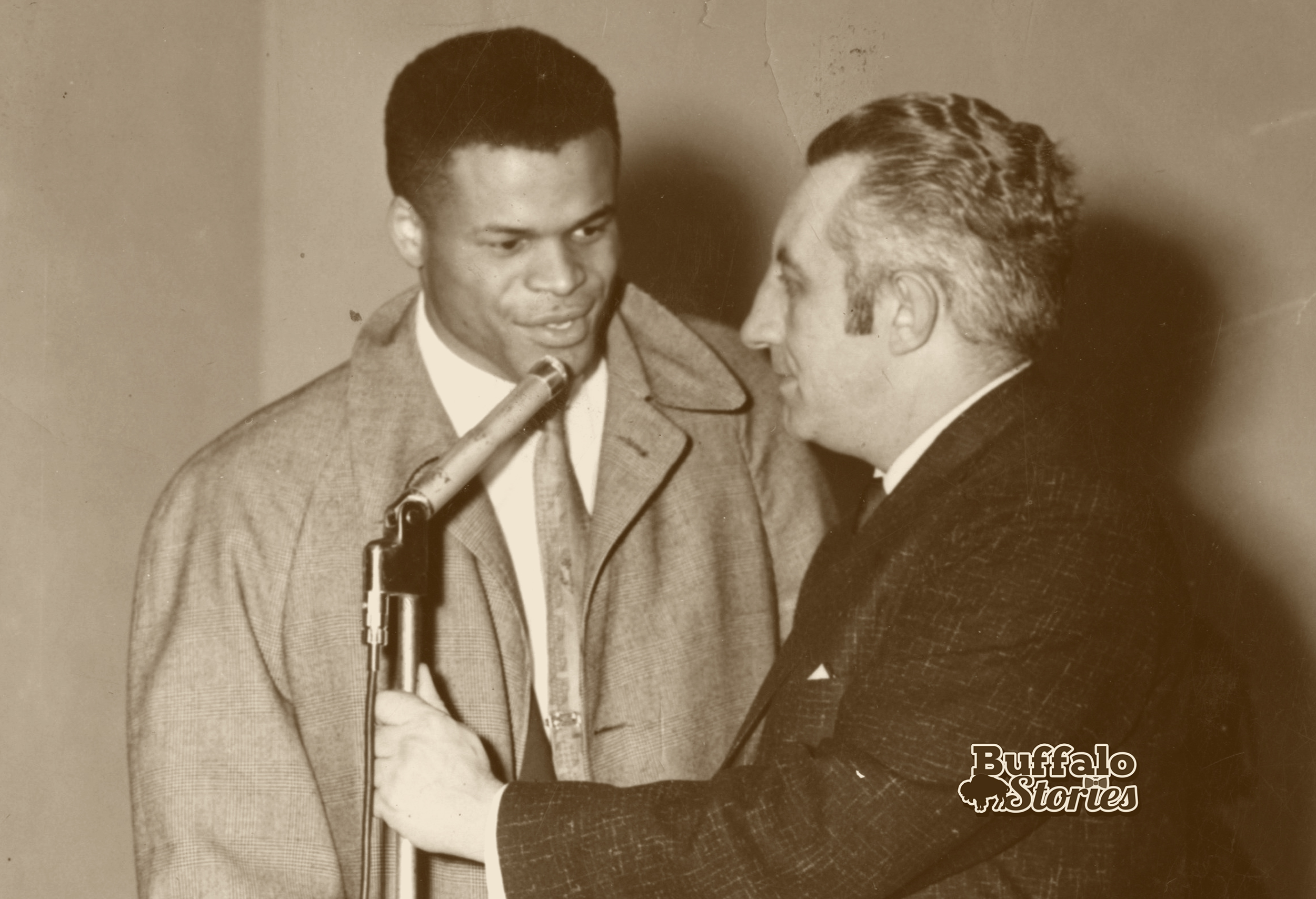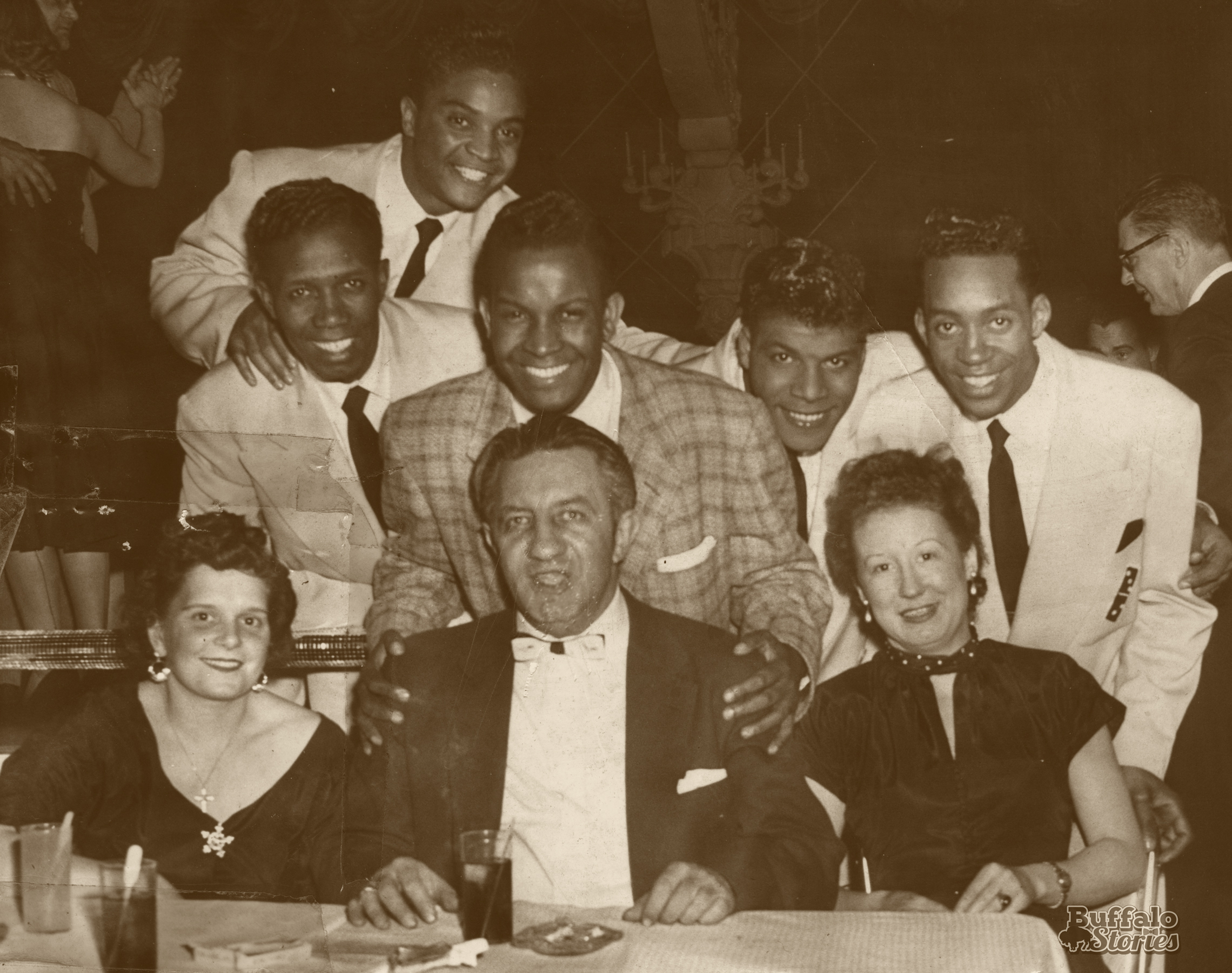 By Steve Cichon
By Steve Cichon
steve@buffalostories.com
@stevebuffalo

Excerpt from 100 Years of Buffalo Broadcasting

The Hound Dog made a permanent mark on the pop culture history of America with his nightly show on WKBW from 1954-58. Starting in the late 40s, George Lorenz was known as “the Ol’man,” “Ol’Dad Lorenz,” and “Daddy Dog” before “The Hound Dog” stuck as a nickname.
Known for his hep records and jive talk, he refused to give the time and temperature on the air. When he did commercials for Mother Goldstein’s wine, he’d sample it on the air.
After spending time at a few smaller stations, in the mid-50s, The Hound took his rhythm and blues program– featuring the music which would soon be known as rock ‘n’ roll– to 50,000-watt WKBW Radio.
The powerful signal allowed “The Hound” to introduce the evolving music genre to the entire northeastern United States. “The Hound” was the Godfather of rock ‘n’ roll radio, not just in Buffalo but around the country.

The Hound with Bill Haley and His Comets.
As a teenager working at a gas station, his first radio job came as an actor in dramas in the late 1930s. He got the job “because of his ability in imitating various dialects,” the Courier-Express reported, adding that he’d “often been cast in the role of the slicker in the racketbusting plays.”
A decade later, he was doing his Hound Dog routine on Niagara Falls’ WJJL. By the mid 50’s, Lorenz’s hip daddy style, and the fact that he was spinning soulful records from the original black artists — not the sanitized crooner re-sings heard elsewhere on the radio — made him an institution.

An unlikely hero of Buffalo teenagers, “The Hound” made it about the music and bringing rhythm and blues to a wider audience. It went beyond the records. Events promoted by Lorenz usually included black and white artists playing together at a time in the mid-50s when that wasn’t always the case. Those audiences were also mixed racially.

A Hound Dog record hop at the Hadji Temple, 118 E. Utica Street, with both black and white teens in attendance. The Hound’s secretary, Betty Shampoe, is to the left on the stage. This photo is from her collection.
When his voice came through the speaker on your radio, you knew you were hearing something you weren’t going to hear anywhere else. He was rock ‘n’ roll even before the phrase rock ‘n’ roll existed.
Ironically, the man who introduced Elvis at Memorial Auditorium was out at KB when the station went rock ‘n’ roll full-time in 1958. Lorenz wanted nothing to do with a Top-40 format, and was known to give the time and temperature at the beginning of his show, and told listeners to “set their clocks and thermometers, because that was the last time they were going to hear that for the next four hours.”

Elvis Presley and George “Hound Dog” Lorenz, Memorial Auditorium.
While inspiring many of the changes that came to KB and many other stations around the country, the Hound stayed true to his style and founded WBLK Radio, where he continued to uncover and spotlight new rhythm and blues artists in Buffalo and to a syndicated audience around the country.
Hernando’s Hideaway hit Buffalo radios in 1954 from the studios of WXRA, which was licensed to Kenmore, but broadcast from studios on Niagara Falls Boulevard, in a spot that was later the long-time home of Swiss Chalet (and today is a vacant lot in front of Outback Steakhouse.)

With a Spanish accent, it was Phil Todaro behind what The Buffalo Evening News called “Hernando’s delightfully fanciful nonsense.”
His show ran evenings every day but Saturday, and from the rhythm and blues music he played, to outings at Crystal Beach and serving bottles of Canada Dry and Oscar pop at his remote broadcasts, the program was clearly geared to the burgeoning teen demographic.

After making offerings on the air, Hernando received more than 3000 mailed requests in two weeks for his “Slang Slogans” dictionary of teen-age vernacular.
The one day he was off in the evening, “Hernando on Campus” was heard Saturday mornings, where “the popular DJ spotlights top tunes determined by survey of the local high schools and colleges and includes a calendar of their upcoming social events.”
He eventually made his way to evenings on WGR Radio before leaving radio for music full time. Among his musical offerings most memorable to Western New Yorkers came as co-writer of Wild Weekend with Tom Shannon. The Rockin’ Rebels hit was an instrumental version Shannon’s radio theme song.

Lucky Pierre, the back of this card says, was born in Paris in 1934, and goes on to say his “rapid rise to popularity, accomplished in the few short years since his arrival in Buffalo, is a result of his rare combination of old-world charm and modern effervescence. His refreshingly different qualities have captured the imaginations of young and old alike.”
After coming to Western New York radio in 1954 at WWOL, where he was not only a disc jockey—but as an amateur boxer and semi-pro football player was named sports director as well.
He moved on to WHLD briefly before heading to WEBR in 1955, and then WBNY before leaving town for Los Angeles, where he’d spent most of the next 60 years on the radio and pioneering the disco and dancing format in the market, as well as hosting a TV cooking show for housewives in the early 60s.
His most adoring fans were the girls and women who were spellbound by his accent and accompanying smooth style.
“Though he’s not very handsome, and he’s not very strong… in a cabin in the blizzard he’s the one you bring along!” chanted his opening song on WBNY, which continued, “I’m the man of the hour, I’m the man of the year… I’m the man that every living husband has the right to fear…. I’m Lucky Pierre!!”

1955 ad shows Lucky Pierre and a young Rick Azar before he headed to WBUF-TV. Nan Cooper spent more than two decades offering household tips on WBEN, including for the full run of “Newsday at Noon,” 1978-96.
This page is an excerpt from 100 Years of Buffalo Broadcasting by Steve Cichon

The full text of the book is now online.
The original 436-page book is available along with Steve’s other books online at The Buffalo Stories Bookstore and from fine booksellers around Western New York.
©2020, 2021 Buffalo Stories LLC, staffannouncer.com, and Steve Cichon






